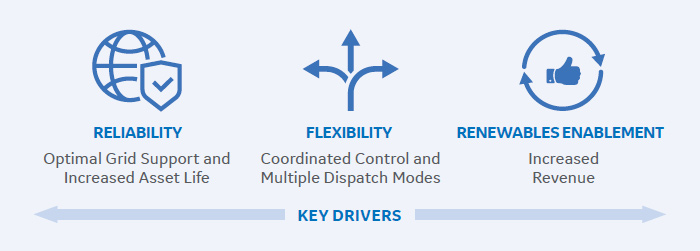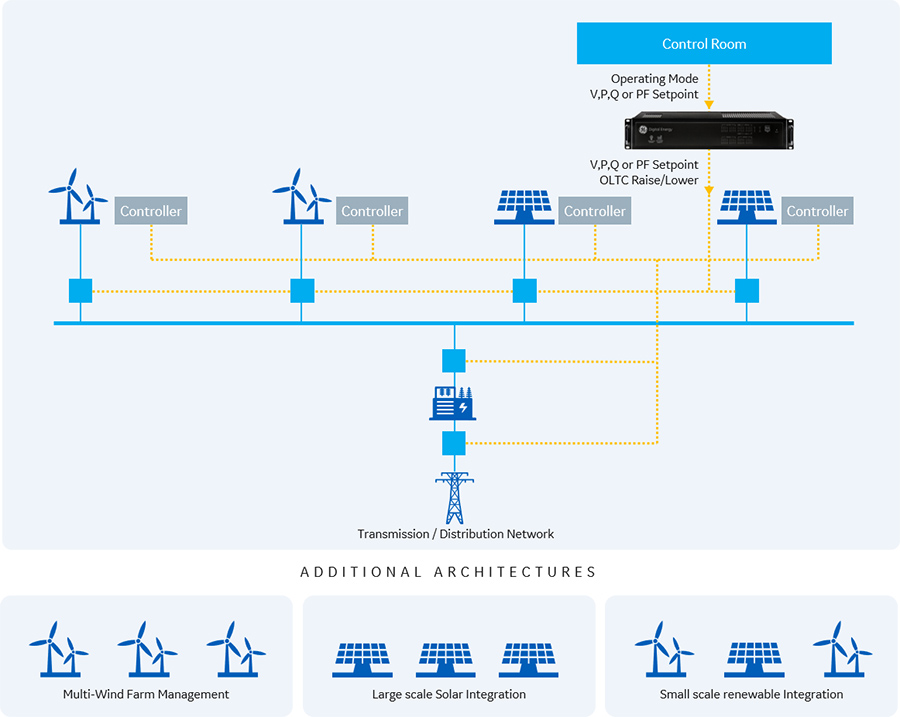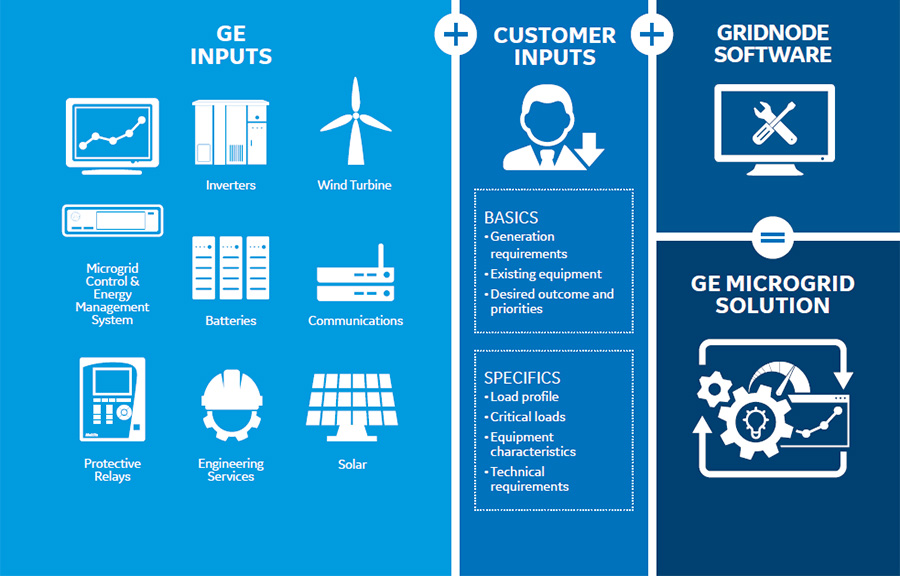
|
GridNode
DER Management Solution Energy trends of renewable penetration and decentralization of generation assets create new industry challenges. These challenges include integration, coordination, and maximizing return-on-investment (ROI) on distributed energy resources (DERs), while providing network reliability and flexibility. GE's GridNode Distributed Energy Resources (DER) Management solution enables utilities and developers to easily integrate renewable energy resources The GridNode DER Management solution includes the control and automation functions to manage active and reactive power, power factor, and voltage at the point of interconnection for your renewable energy resources. Customer Outcomes

|
What is a Distributed Energy Resource (DER)
"A Distributed Energy Resource (DER) is any resource on the distribution system that produces electricity and is not otherwise included in the formal NERC definition of the Bulk Electric System (BES)". ~ NERC . Distributed Energy Resources are sometimes referred to as Distributed Generation, Distributed Energy, or Decentralized Energy and typically consist of renewable energy sources such as solar, wind, and storage.
Challenges with Integrating Renewables
Benefits of GE’s GridNode: DER Management Solution
GridNode DER Management Solution is a flexible and scale-able platform that incorporates various dispatch modes and control capabilities to easily integrate renewable energy onto the grid. The GridNode platform is vendor agnostic having the capability to integrate GE and 3rd party devices and assets.

GridNode: DER Management Solution
Dispatch Modes
GridNode: DER Management Solution, has the capability to dispatch commands to the connected DERs in one of the modes below in order to achieve the provided setpoint at the point-of-interconnection (POI).
The GridNode: DER Management Solution considers the network limits and parameters and the individual DERs capacities and constraints when dispatching commands to each DER. In addition, the GridNode solution is capable to controlling a tap changer if required to obtain the desired value at the point of interconnection (POI).
Control Capabilities
Services
GE's engineering and consulting services team provides a wide range of capabilities to assist you with integrating renewables.
Our dedicated team of experienced engineers can provide end-to-end solutions or specific activities based on the specific project requirements. From new installations to understanding the best way to upgrade an existing system, GE’s engineering team has been trusted to analyze, design and implement modern power systems.
Learn More
Business Model
As with most projects a microgrid project requires effective planning, analysis, and execution. Projects can range from large scale new installations consisting of engineering procurement, and construction of buildings, new DERs, electrical and mechanical equipment, protection and controls, as well as services to retrofits of existing systems with new microgrid controls. When required, GE partners with industry leaders to develop and design a system around our customers desired outcome. This approach enables GE to deliver a full turn-key solution.


GE works with partners to provide a turn-key solution to our customers
Customer Case Study: Nice Grid, France
FIRST MEGAWATT SCALE SMART SOLAR DISTRICT
Grid Solutions provides a smart energy management solution which controls and optimizes the full range of local energy resources available to solar districts in real time through an array of flexible solutions that are compared and incorporated into the grid. The energy manager monitors information on conditions affecting network operations—such as sun forecasts, consumption patterns, and technical issues— and activates these flexible solutions based on aggregated customers flexibilities given by EDF. Electricity supply is optimized, renewable energy integration is optimized and the overall carbon footprint of the district is reduced, providing a better quality of life.

